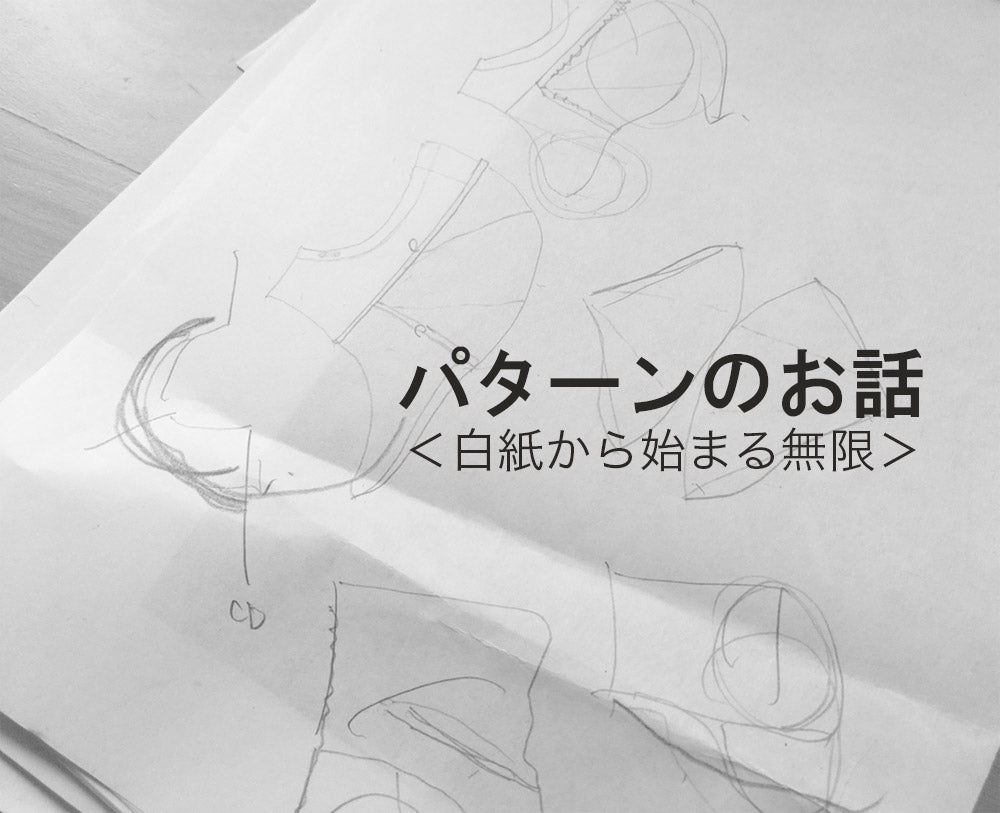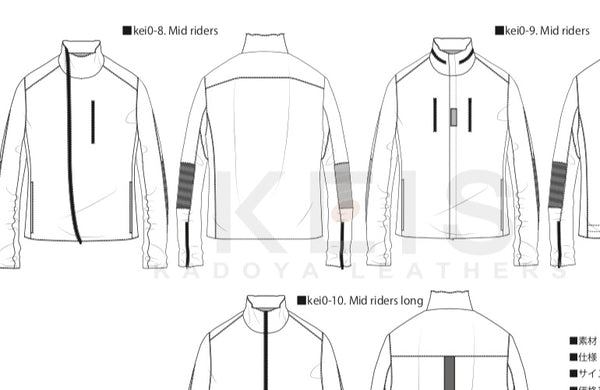
A little maniac pattern (design drawing) story
When planning and designing, there are also some maniacal (somewhat unnecessary?) tasks.
That is the design of the pattern (blueprint)
Well, I don't think it's appropriate to talk about this kind of thing, but...
Please take this as just a short story about Kadoya Planning Man lol

Planning usually starts about a year and a half before release. (Currently, we are launching the 21st fall/winter season...)
It is only the design on paper that is designed at the start of the process and is used as a document and then thoroughly criticized by all the staff.
It's just a theoretical theory, so to be honest , I think the accuracy of the design is at best 30% .
Over the course of a year and a half, we carefully created samples (prototypes) many times and refined them.
To reach completion
<The starting point design + pattern (design) + sewing accuracy are extremely important. >
I think people in the clothing and manufacturing industries will sympathize with this.
The design, pattern (design), and sewing (manufacturing site)
As a designer, I am very conscious of ``How much can I imagine?''
So, as a designer myself, I use technical drawings to simulate the general pattern and important points.
(The photo above is an image of a draft design scribbled on a notepad.)
Cut, connect, bend, and twist the patterns you created in the past.
If I do this, it will give a sense of volume, or the design will stand out.
Or maybe it's because of its rational construction that it won't break easily.
During that time, like a flashback, an image of the actual finished product appeared in my mind.
When you put the sleeves through a sewn garment, you can feel the weight and wearability.
Concentrate on that one piece and sharpen your senses.
At this time, we also decide on the detailed design and sewing specifications.
I can't help but think, "Isn't it superfluous since the pattern maker is the one who draws the drawings anyway?"
The pattern makers and staff at the head office factory use their knowledge and experience to create the content you want to create from your own perspective.
They will tell you, ``Wouldn't it be more reasonable, easier to make, and cooler if we did it this way?''
I really like the dialogue in manufacturing within the company.
I think it's important to make good things and create better plans .
We go through such discussions over and over again as we create the product, so we are really happy when mass production is confirmed.
(The content seems to be gradually changing from pattern anecdotes to boasting about the main factory, so I'll talk about that another time...)
<As a planning person>
You must constantly refine your sense of design
I also need to acquire more and more knowledge about sewing and materials.
In such a situation
The time I had to face the blank paper of a pattern was extremely freeing.
It somehow feels infinite.
That was a short story.